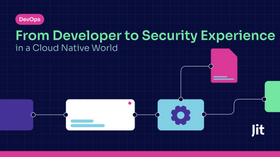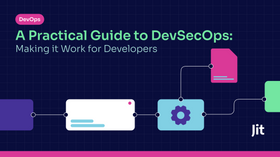Level up: Gamify Your Software Security
Incorporating game-like elements can encourage developers to not only prioritize security, but do so in an engaging and rewarding way.
Updated December 31, 2024

The challenge in software development isn't just about writing code, it's also about ensuring that security is embedded across the software development life cycle.
Like other areas in engineering, we’ve learned that gamification offers an innovative way to help address this challenge –– whether in skilling up with platforms such as Wilco or learning security best practices with Secure Code Warrior –– gamification has enabled our ecosystem as a whole to evolve and upskill continuously.
Gamification doesn’t need to be solely for practice and skilling up. Incorporating game-like elements into security practices of actual engineering and production systems can encourage developers to not only prioritize security, but to do so in a more engaging and rewarding way.
This might sound scary, like playing around with production systems, but it’s nothing of the sort. As we try to ensure we tick the right security boxes, below are some refreshing ways to embed security through gamification and potentially make it less of a chore for your developers.
Achievement Unlocked: Gamification for Security Zen
Gamification isn’t a new trend in the security world. Some of our greatest learning and knowledge has been achieved through CtF (capture the flag) challenges and Red/Blue team simulations that add the competitive aspect to hands-on learning.
Gamification has been a great way to level and skill up across the industry, and this has become particularly important as adversaries become more sophisticated and robust security becomes a critical piece to business continuity.
Below is a roundup of some fun ideas to embed gamification into your engineering workflows to enhance software security practices that developers might also enjoy while they’re at it.
10 Ways to Gamify Security that Developers Can Enjoy
#1 Daily Security Challenges
First on our list is interactive challenges. These are challenges taken from real-world security. Introducing small daily challenges related to security, like identifying potential risks in a code snippet, encourages developers to think on their feet and apply best practices while learning about evolving threats so they can handle them when they arise in real production systems.
By introducing security challenges in the form of quick, daily engagements, gamification keeps security top of mind and developers on top of emerging threats. , making them better equipped to handle them when they arise in real production systems.
#2 Team-Based Learning
In the same way that you can introduce individual challenges, you can encourage collaborative problem-solving and peer learning with team-based contests.
You can do team sprints or other similar challenges for embedding security in a specific timeframe.
Tackling security challenges together fosters a culture of collaboration and can add some healthy and fun competitive spirit.
#3 Reward System for Security Implementations
We all love our extrinsic motivators, –whether it’s stars or our green squares of activity on GitHub or even our badges and stickers in forums and groups. So why not create a reward system for security too?
This makes it possible for developers to earn points, badges or status for successfully integrating security measures into their code, recognizing their achievements.
#4 Personalized Dashboards with Gamified Metrics
Light or dark mode? Everyone has their personal preference, and that’s why most UIs today provide both experiences.
Visual Studio Code and other apps offer endless themes and customizability, and developers love being able to control the environment where they spend most of their time.
Offering themed and customizable interfaces is a great way to keep the training visually engaging and personalized for security gamification. Engaging, visual dashboards that track and display security metrics create a much more personal experience and make progress and achievements visible and rewarding.
#5 Progression and Levels
Just like all games that keep gamers coming back to unlock the next achievement, this is the essential and core backbone for any gamification program.
Implement a learning system and program where participants can advance through levels when completing tasks, and feel a sense of achievement in their accomplishments and skill level. Each level will provide the learner with an on ramp and laddering experience where their progress can be tracked and appreciated.
#6 Leaderboards and Recognition Programs
Just as support engineers are often rewarded for the speed and volume of tickets they close, similar ideas can be used to advance security practices and hygiene in your organizations. Use leaderboards to encourage a healthy competitive spirit and recognize individuals or teams for exceptional security contributions. These leaderboards can be shared across the organization, for example by posting them daily on a dedicated Slack channel.
This is in addition to the badges and other rewards mentioned above. I’ve seen recognition programs for other strategic initiatives in organizations, such as “Top Blogger” or “Top Speaker” and even special hoodies or swag awarded to those who achieve the title, giving it exclusivity and prestige.
This can bring tremendous value to an area that should be even more strategic to companies than outbound activities: the security of our systems and products. Rewards and recognition go a long way toward informing teams that their contributions are valued.
#7 Design for Various Skill Levels
When we were growing up, it would take us forever to progress between karate belts. Competitive sports have also evolved since, and today there are “mid-levels” of two-color belts to enable children and teens to see progress, and want to keep investing in fitness and skill development.
The same is true when it comes to learning security. By ensuring that the gamified elements cater to a range of skill levels, from novices to seasoned developers, it makes security practices accessible and engaging for everyone –– and easier to stay committed to learning, as the milestones between achievements are more easily attainable.
#8 Integration with Everyday Workflows
It goes without saying that to really make these ideas work for your teams, gamification elements should be seamlessly integrated into the daily developer workflows. If you don’t invest the effort to make security practices a natural and regular part of the development process, they will not be adopted.
If you choose one or some of these ideas, make sure that they are well-integrated with existing processes and workflows so that you can reap the most rewards and benefits.
#9 Regular Updates and Evolving Challenges
Eventually we’re looking to level and skill up our developers to help combat the growing threat landscape and attack surface, and security engineering teams simply can’t do it alone. That’s why it’s critical to keep the content fresh, the challenges and scenarios current, aligned with the latest security trends.
Make sure to introduce new challenges and scenarios to maintain engagement and ensure continuous learning to help prevent the next big incident in your production systems.
#10 Feedback Loop for Continuous Improvement
In the end, if developers won’t adopt the gamification program, you’ve missed the mark. As with any new product, process, feature or program, it’s important to establish a feedback loop that allows developers to give input on the gamified elements.
This will help ensure that the platform evolves according to their needs and challenges, aligns with real-world workflows, is satisfying to participate in and the outcomes are rewarding enough.
Closing thoughts
In the end, integrating gamification into software security practices presents an exciting opportunity to enhance the security posture of software development teams.
By making security more interactive, engaging and rewarding, developers are more likely to treat security as a fundamental part of their workflow, leading to more robust and secure software products.
These are just a few examples of how you can apply these principles into your developers day-to-day workflows, to try and level and skill up security in your organizations, in ways that developers will enjoy.





